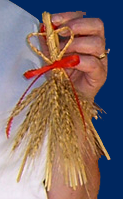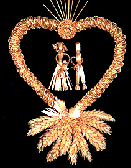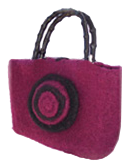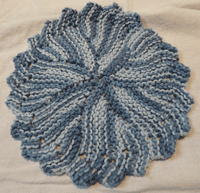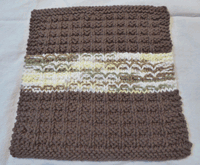Crafts
Nordic Paper Crafts
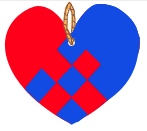 Scandinavians are known for their many paper crafts. All the Nordic countries are great at making Christmas and other decorations out of paper.
Scandinavians are known for their many paper crafts. All the Nordic countries are great at making Christmas and other decorations out of paper.
Hans Christian Andersen's influence in intricate paper cuttings are still popular and are available commercially as well (usually Danish cut-outs).
Using Scandinavian folk-art motifs you can also make cards, wrapping paper, and placemats by creating colorful designs on appropriate paper stock.
There are a multitude of online patterns from beginner's to advanced. Use these hearts to decorate Christmas trees and Valentine's table settings.
Hvetevefting (Wheat Weaving)
In Norway wheat is braided into different patterns and shapes for decorating the house and Christmas tree. Now small ready-made straw decorations for the tree are so common and cheap in the stores that most crafts people make only larger and fancier decorations for home or hytte (cabin) and buy little ones for the tree.
If you need an instructor, contact a local Daughters of Norway lodge to see if they can help you.
|
Lodges offer classes |
Wheat Weaving demo |
|
Cookie Stamps
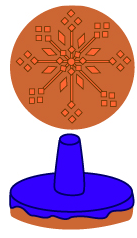 Early in the sixteenth century Swedish cookie stamps were custom made either out of clay or carved wood. To create these in clay, you need a kiln, clay, linoleum cutting tools, creative simple design ideas (flowers, snowflakes, hearts, animals, leaves, birds, or symbols).
Early in the sixteenth century Swedish cookie stamps were custom made either out of clay or carved wood. To create these in clay, you need a kiln, clay, linoleum cutting tools, creative simple design ideas (flowers, snowflakes, hearts, animals, leaves, birds, or symbols).
This craft is not a one-day project because the clay needs to dry before cutting and then dry more once carved before firing. Firing and the optional glazing for the handle and top part of the stamp, also takes additional time. However, this craft is again a practical one that can be used on creating butter cookies.
A great online site for commercial stamps to purchase which also has background details on the Scandinavian history of these cookie stamps in addition to design ideas is Rycraft. Rycraft also has additional crafts to make using their cookie stamps.
Dalahast (Dala Horse)
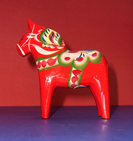 Dala horses are a traditional Swedish toy/decoration made in the Dalarna province. Since the 1939 New York World's Fair where they were stationed outside the Swedish pavilion, they have been considered a Swedish national symbol. They have a unique shape, being rather thick horses without tails.
Dala horses are a traditional Swedish toy/decoration made in the Dalarna province. Since the 1939 New York World's Fair where they were stationed outside the Swedish pavilion, they have been considered a Swedish national symbol. They have a unique shape, being rather thick horses without tails.
Carved horses have a rich tradition in Swedish history, perhaps as early as the 13th century. The horses were originally carved to be toys for children. During the long winters many farmers had time to carve, and fathers serving in the military stationed far from home, would also pass their free time carving these horses for their children. Real horses symbolized great value to their owners and were considered a sacred animal. The painted Dala horses were introduced sometime in the 1700's and by the 1800's they were becoming more widely known as the floral decorations begin appearing.
The Dala horses were traditionally carved from one piece of wood with their body painted a red-orange color with additional floral and bridle details added in additional colors. The kurbits painting technique was sometimes used in painting these horses. In this technique, two colors are painted at the same time on the same brush.
Felting
Scandinavian felt making is a tradition in which wool is made into felt, then into either a craft object, purse, shoes, slippers, or jewelry. Although, felt crafting is not exclusively Nordic, it was brought to United States by Scandinavian immigrants and shared with others. One of our lodge's (Sigrid Undset #32) charter member, Anne Einset (Vickrey) Evans, became an internationally recognized author and designer in felting
|
Advanced Felter's Purse |
Necklaces designed from |
